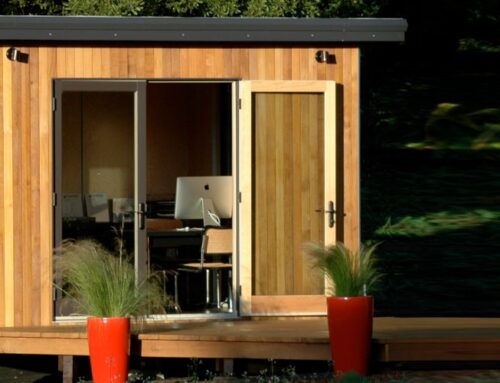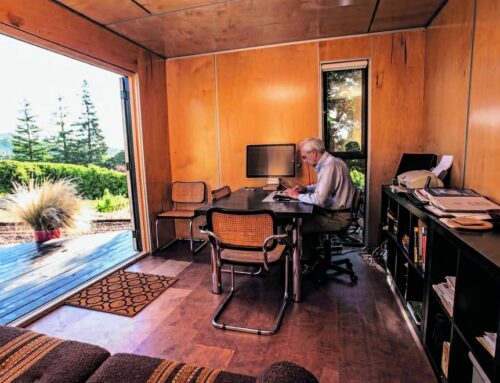http://www.codepublishing.com/CA/Larkspur/html/Larkspur18/Larkspur1823.html
Accessory dwelling units shall be permitted in the R-1, R-2, R-3, SD and GD Districts and as specified in the ordinances governing Planned Development Zoning Districts. (Ord. 1012 § 5, 2016; Ord. 992 § 5, 2013; Ord. 921 § 4, 2003. Formerly 18.21.020)
Application
The construction or installation of an accessory dwelling unit shall be permitted subject to the following:
Construction of an accessory dwelling unit within the SD and GD Zoning Districts shall be subject to design review before the Planning Commission.
Construction or installation of an accessory dwelling unit in residentially zoned districts shall require zoning approval from the Planning Department. An application for zoning approval to allow for an accessory dwelling unit shall include the following:
A. An application form, provided by the Planning Department and signed by the applicant, under penalty of perjury, accompanied by a deposit determined adequate by the Planning Department to cover the actual costs of the processing and review of the application.
B. A site plan of the property drawn to scale, including but not limited to the following information:
1. All streets, walks, driveways, paths, parking areas, patios, and other hard surface areas.
2. All existing structures on the subject property and all existing structures on adjacent properties that are within ten feet of the subject property’s property lines.
3. All heritage trees.
4. Property lines with metes and bounds description and all easements.
C. A topographic survey of the property if the average slope of the site is, in the opinion of the Planning Director, in excess of ten percent. The scale of the map shall be the same as the site plan and the two plans may be combined. The contour interval shall not be greater than five feet.
D. Building elevations of the proposed accessory dwelling unit, if the dwelling is to be constructed as a separate structure or as an expansion of the existing structure.
E. Floor plans of both the one-family and accessory dwelling units.
F. The Director of Planning and Building may waive any of the above required informational items, maps, drawings, etc., if, in his or her opinion, they are unnecessary or unreasonable under the circumstances. (Ord. 1012 § 5, 2016; Ord. 992 § 6, 2013; Ord. 921 § 4, 2003. Formerly 18.21.030)
General Requirements and Standards
All accessory dwelling units shall comply with the requirements and standards set forth below, except for units legally constructed prior to the adoption of this chapter.
A. Number of Units Allowed. Only one accessory dwelling unit or one junior accessory dwelling unit may be located on any appropriately zoned parcel that contains a one-family dwelling.
B. Floor Area. The accessory dwelling unit shall have a maximum floor area of seven hundred square feet and a minimum of three hundred twenty square feet.
C. Lot Size. The lot must be a minimum of seven thousand five hundred square feet or a legal lot of record.
D. Conformance to Development Regulations. All the regulations and standards of the Larkspur Municipal Code, including but not limited to the provisions of the zoning district in which the dwelling is located and building and fire regulations, shall apply to the accessory dwelling unit in the same manner as they do to a one-family dwelling on the parcel in question. Detached accessory dwelling units shall meet the height and setback requirements for accessory structures as stipulated in the applicable zoning district. Accessory dwelling units that are part of the main dwelling structure shall meet the height and setback requirements for main dwellings.
E. Parking. One additional standard size off-street parking space shall be provided in addition to the off-street parking requirements required for a single-family dwelling pursuant to Chapter 18.56 LMC. The additional space shall meet the parking standards outlined in Chapter 18.56 LMC, but may be uncovered. An uncovered space meeting this requirement shall be permitted in the setback areas or through tandem parking, unless the Planning Director and/or Fire Chief makes specific findings that parking in setback areas or tandem parking is not feasible based upon specific site, regional topographical, or fire and safety conditions. Parking within the setback areas or the use of tandem spaces is of particular concern in areas where the right-of-way is narrowly paved and emergency access is restricted.
F. Occupancy by Owner.
1. Either the accessory dwelling unit or the one-family dwelling must be the principal residence of the owner of the property in question. Said owner-occupant shall be the record owner of no less than fifty percent interest of the property in question.
2. Prior to issuance of a building permit (if new construction is required) or prior to occupancy of the accessory dwelling unit (if no new construction is required), the applicant shall demonstrate to the Planning Director that the above requirement has been noted in the deed of the property in question, together with a clause stating that this notification shall not be removed from the deed without the prior written consent of the City of Larkspur. The language of this notification shall be in a form acceptable to the Planning Director.
G. Rental Unit. The dwelling not occupied by the property owner shall be either a rental unit, leased, or provided without compensation for a period of no less than thirty days.
H. Unit Type. Accessory dwelling units are limited to either a one bedroom or a studio-unit type.
I. Design. The design of the accessory dwelling unit shall be compatible with the design and scale of the existing dwelling (uses substantially the same landscaping, color materials and design on the exterior). An accessory dwelling unit located above the first floor of an accessory structure (e.g., above a garage in an R-2 or R-3 District) shall be designed so as to minimize privacy impacts on neighboring properties (e.g., through the use of opaque glass or clerestory windows where such windows face neighboring properties).
J. Historic Preservation. The design and construction of the accessory dwelling unit shall not have an adverse impact on any real property listed in the California Register of Historic Places or identified in the Local Inventory of Historic Places.
K. Expiration of Issued Permit. Accessory dwelling unit permits shall expire if not vested within two years of the date of approval. As used in this section, “vesting” means: (1) recordation of required deed restrictions; (2) securing a valid building permit and/or other permits related to the approval; and (3) substantial completion of improvements in accordance with the secured building permit and/or other permits. Prior to the expiration of a junior accessory dwelling unit approval, the applicant may apply to the Planning Director for an extension of not more than one year from the original date of expiration. The Planning Director shall grant the extension if (s)he finds that there has been no change in the factual circumstances surrounding the original approval.
L. Termination of Accessory Dwelling Unit. Termination of the use requires the elimination by the property owner of any secondary utility meters and removal of all kitchen cabinetry, kitchen sink, refrigerator, dishwasher, and cooking facilities from the accessory dwelling unit area. If attached, the remaining space shall be internally connected, with direct access through doors and/or stairs to the main dwelling unit. The property owner shall apply for building permits to remove such features, as required under the City’s building and fire codes. (Ord. 1012 § 5, 2016; Ord. 953 § 1(28), 2007; Ord. 921 § 4, 2003. Formerly 18.21.040)
More at: http://www.codepublishing.com/CA/Larkspur/html/Larkspur18/Larkspur1823.html



Leave A Comment
You must be logged in to post a comment.